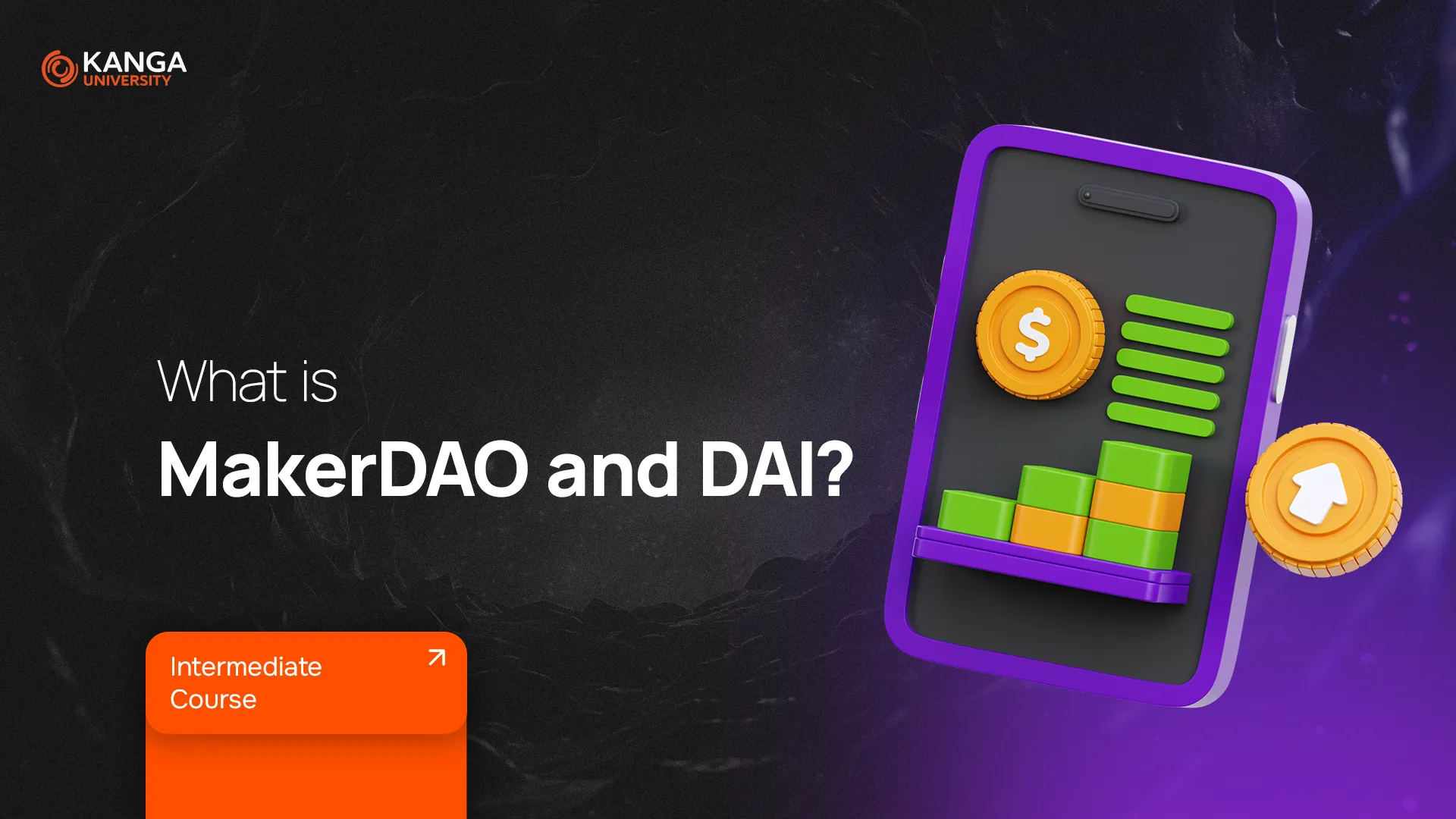
When we talk about decentralized finance (DeFi), MakerDAO is one of the names that comes up over and over again. It’s a protocol that lets people take out crypto loans — without using a bank or middleman — and it runs on Ethereum. At the center of this system is a unique stablecoin called DAI.
In today’s lesson, we’ll break down how MakerDAO works, what makes DAI different, and how you can actually earn from the system.
What Is MakerDAO?
MakerDAO is a decentralized lending platform built on the Ethereum blockchain. Instead of borrowing money from a bank, users lock up crypto as collateral and borrow DAI, a stablecoin whose value is pegged to the US dollar.
The whole process is automated using smart contracts — bits of code that execute actions when certain conditions are met. Think of MakerDAO as a decentralized bank, with DAI as its main financial product.
What Is DAI?
DAI is a stablecoin. Its value stays close to $1, which makes it useful for trading, saving, or borrowing without the wild price swings of Bitcoin or Ethereum.
DAI is unique because it’s backed by other cryptocurrencies — like Ethereum (ETH), Wrapped Bitcoin (WBTC), and even other stablecoins like USDC and USDP. This multi-asset backing gives DAI both stability and flexibility.
DAI was launched in 2017 to solve a big problem in DeFi: the lack of reliable, price-stable digital assets. Since then, it’s become one of the most widely used stablecoins, integrated with over 400 decentralized apps (dApps) and supported by hundreds of crypto wallets.
How Is DAI Created and Paid Back?
Here’s how the system works:
-
You deposit ETH or another accepted crypto into a vault on MakerDAO’s Oasis app.
-
In return, you get a loan in DAI.
-
When you repay the loan, your DAI gets “burned” (destroyed), and your collateral is returned.
So DAI is “minted” when you borrow it and “burned” when you repay — helping keep its value stable and supply in check.
What About the MKR Token?
MKR is MakerDAO’s governance token. If you own MKR, you can vote on key decisions like:
-
Which assets can be used as collateral
-
Interest rates and risk limits
-
How the protocol evolves
Holders of MKR also act as a backstop — if the system runs short on funds, new MKR tokens can be minted and sold to cover losses.
How Can You Earn with MakerDAO?
There are a few ways:
-
DAI Savings Rate (DSR): Deposit your DAI and earn passive interest — no bank needed.
-
Collateralized Loans: Deposit assets like ETH or MATIC, borrow DAI, and reinvest or use it however you want.
-
Governance Rewards: MKR holders can benefit from being part of the decision-making process.
What Happens If Prices Crash?
If the value of your collateral drops too much, your position gets liquidated. That means your crypto is sold off to repay your debt. This process is handled automatically and fairly — and helps keep the system stable.
If the system can’t recover enough DAI during a liquidation, MakerDAO uses a buffer pool of funds. If that’s still not enough, the protocol creates new MKR tokens and sells them to cover the shortfall.
What Are the Risks?
-
Centralized exposure: Over half of DAI’s collateral today comes from centralized stablecoins like USDC. If regulators freeze these assets, DAI could be affected.
-
Oracles: MakerDAO relies on external data providers (oracles) to supply asset prices. If those prices are wrong, loans could be mismanaged.
-
Complexity: For new users, MakerDAO’s mechanics might feel overwhelming at first.
Summary
MakerDAO is a foundational project in the DeFi space. It offers a way to borrow money, earn passive income, and govern a financial protocol — all without relying on banks.
DAI, its stablecoin, plays a critical role in helping users move value safely and predictably across the crypto ecosystem.
While there are risks involved — especially around collateral and regulation — the system has proven to be one of the most resilient in crypto. And as DeFi continues to grow, MakerDAO is likely to remain a key player.